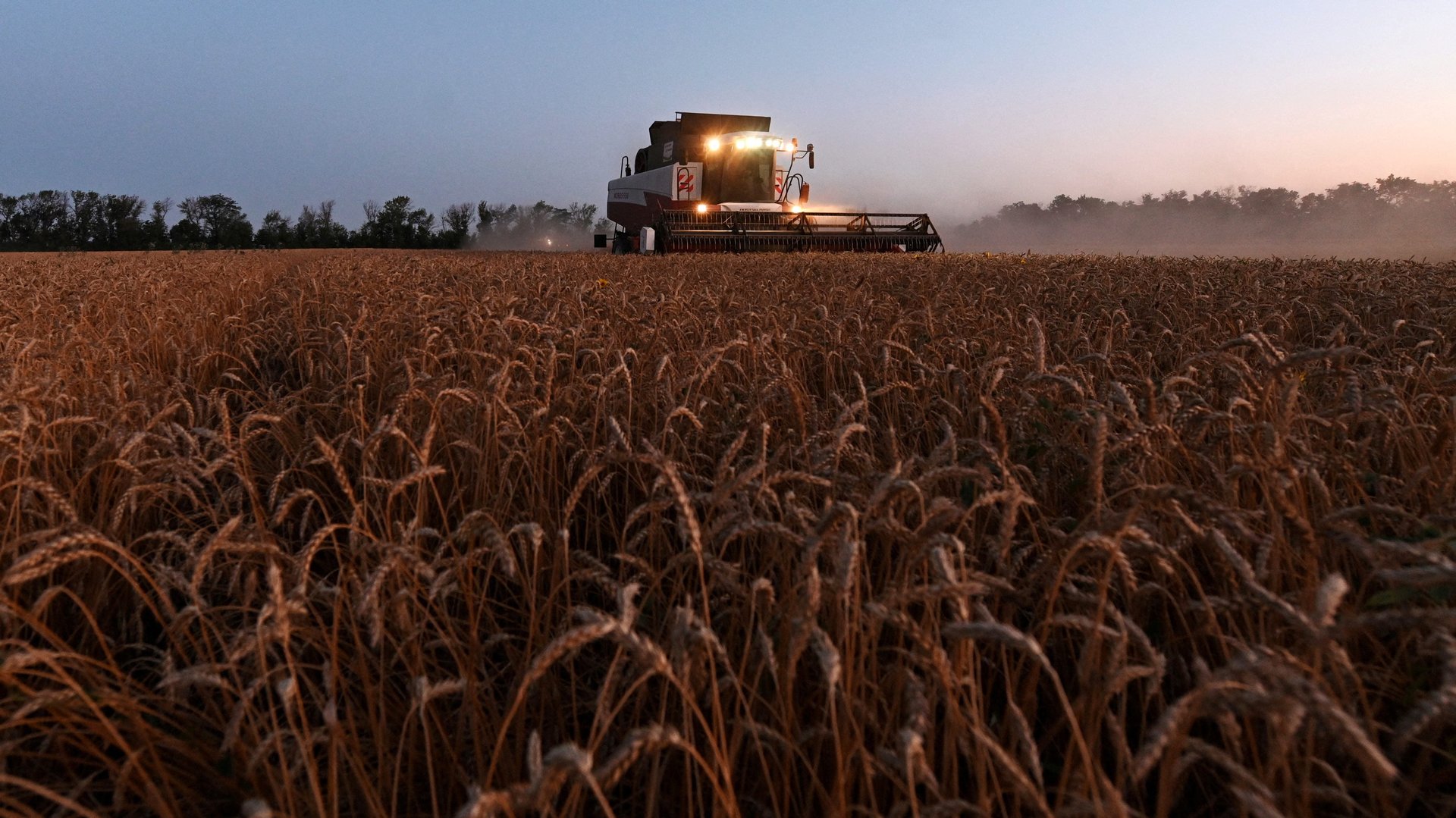How the Russia-Ukraine crisis could worsen global food inflation
Russia and Ukraine export a lot of wheat. Russia supplies about 20% of world wheat exports, and Ukraine about 10%, according to the Food and Agriculture Organization (FAO) of the United Nations. Together, they account for approximately 13% of total global wheat production.


Russia and Ukraine export a lot of wheat. Russia supplies about 20% of world wheat exports, and Ukraine about 10%, according to the Food and Agriculture Organization (FAO) of the United Nations. Together, they account for approximately 13% of total global wheat production.
Russia’s attacks on Ukraine, once known as the breadbasket of the Soviet Union, could disrupt agricultural exports, and further increase wheat prices. This could lead to pantry staples, from flour to pasta to bread, becoming more expensive.
Wheat prices were already inching up in anticipation of the Russia-Ukraine conflict. As of Feb. 24, wheat futures prices on the Chicago Board of Trade hit $9.35, the highest point since July 2020. “It’s incredible, frankly, that this is likely the most anticipated invasion in history and yet it seems like it has taken the markets by surprise,” said Jake Hanley, managing director at Teucrium, an agricultural investment firm.
The direct effects of the Russia-Ukraine conflict on agricultural exports are still unfolding. There have been reported attacks in the southern part of Ukraine, which has five main grain ports. Continued disruptions could affect the next harvesting season, which starts at the end of June, said Vito Martielli, a grain and oil seeds specialist at RaboResearch, which analyzes food and agribusiness. So far, two-thirds (pdf) of Russian wheat and barley have been exported during wheat season, but if sanctions continue through July, when harvesting begins, it could cut into global grain availability, according to the report.
Supply chain woes and severe weather
Wheat prices were rising even before the conflict, due to pandemic-related supply-chain snags and severe weather. The supply of wheat is forecast to shrink, even as global consumption increases, according to a Feb. 9 report (pdf) from the US Department of Agriculture (USDA), largely due to ongoing dry seasons. Droughts in the Plains region in the US drove up wheat prices in 2021, which contributed to flour prices rising more than 10% year-over-year in January. Meanwhile, Ethiopia, Kenya, and Somalia are experiencing severe drought, which has limited food production locally.
Higher wheat prices could push up global food prices
In the backdrop, food prices have been rising around the world, and the crisis could worsen the trend. In January, the FAO’s index of food prices rose to its highest levels since 2011. The index measures the monthly change in average prices of the food categories meat, dairy, cereals, vegetable oils, and sugar.
Low- and middle-income countries, with limited production capabilities, depend on these major exporters, according to the USDA. The largest growth markets for wheat imports include north and sub-Saharan Africa, the Middle East, and southeast Asia, the USDA reports.
Food NGOs are monitoring the situation. In the majority of food crises, conflict has been the key driver for rising hunger rates globally, said Shaza Moghraby, a spokesperson at the UN World Food Programme, for which the Ukraine is the second largest supplier of wheat. Food insecurity deepened in 2021, due to natural disasters and economic shocks from covid-19. In an email Moghraby noted, “The world simply cannot afford yet another conflict.”